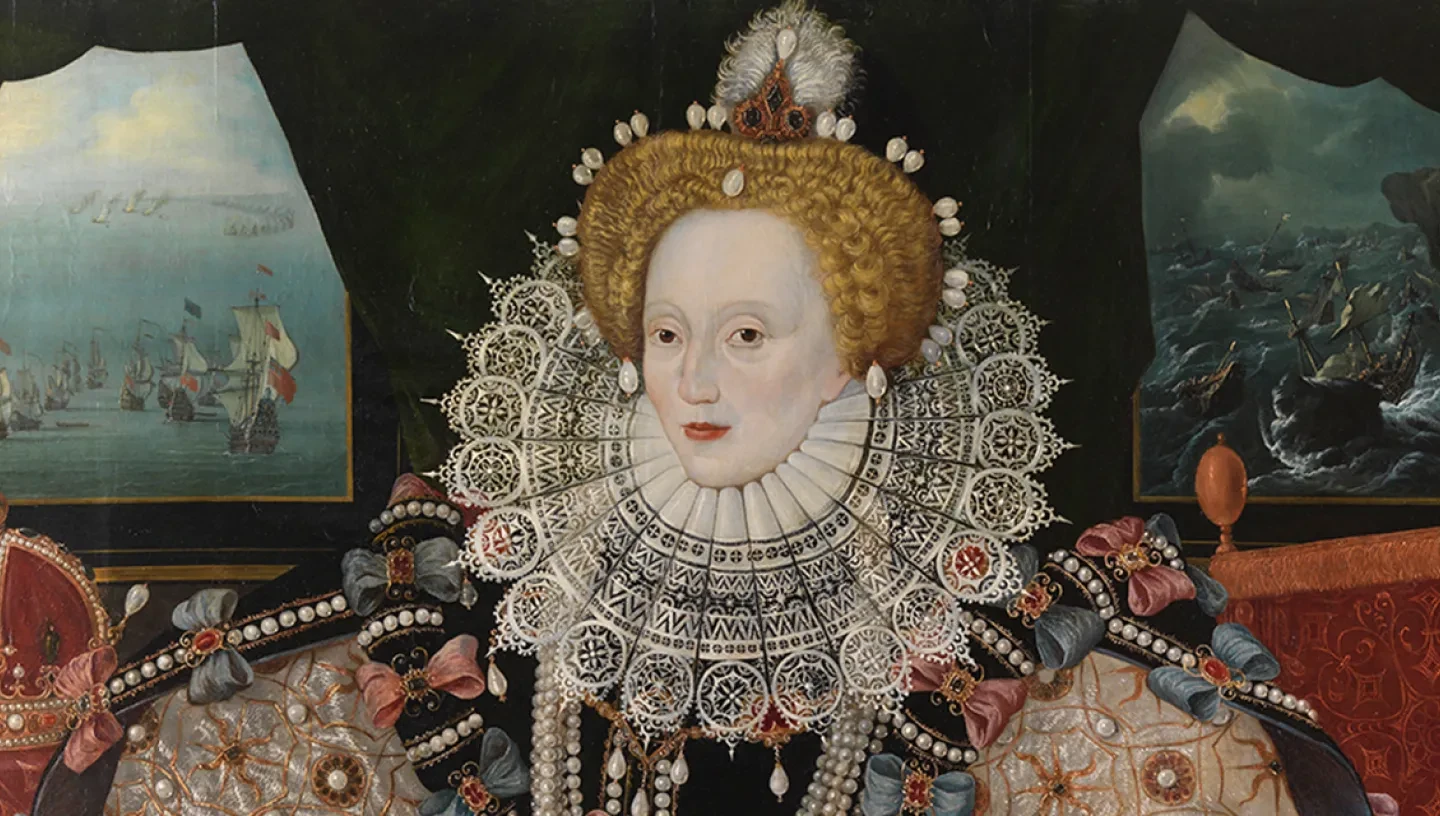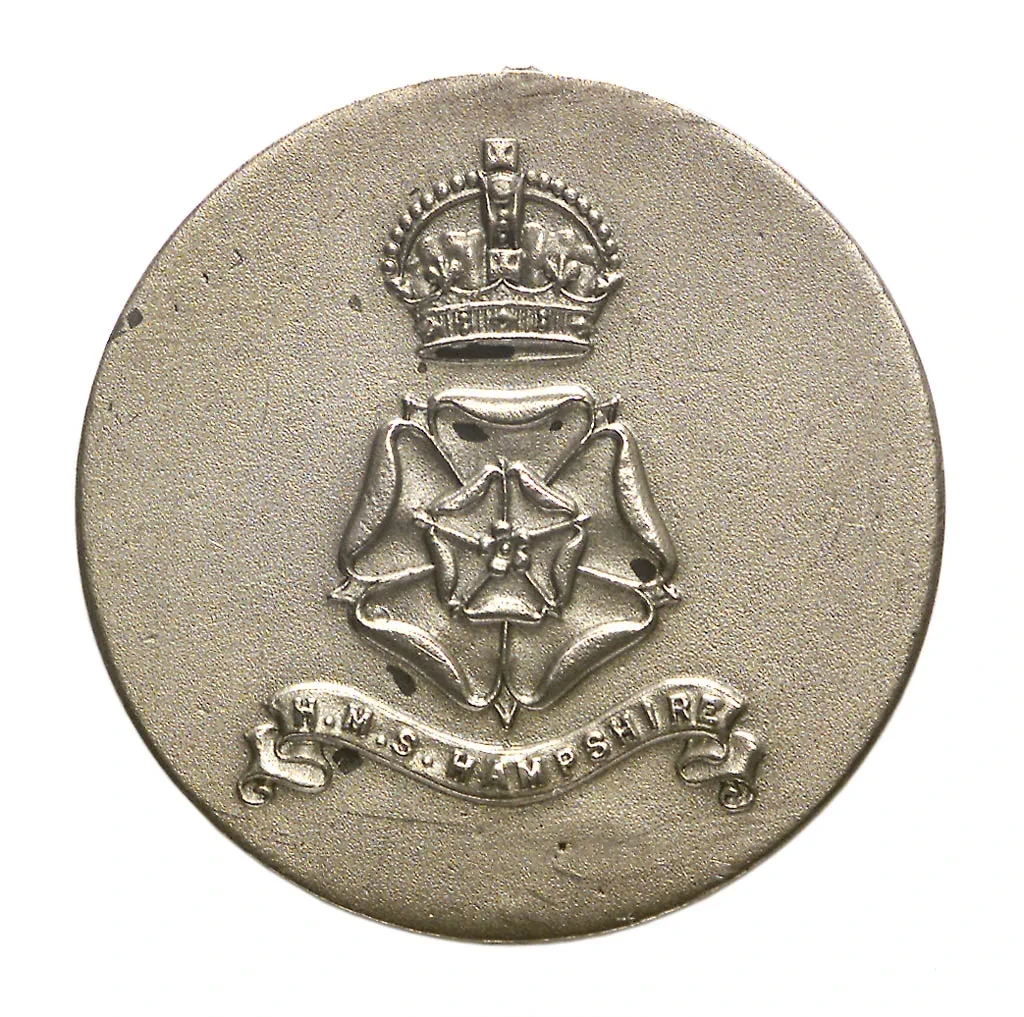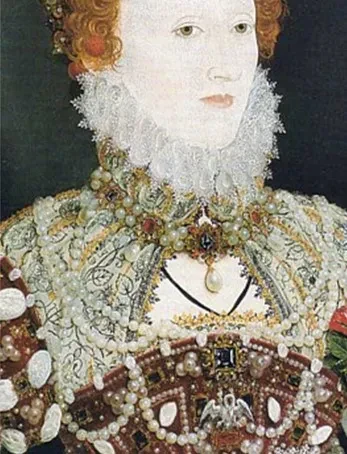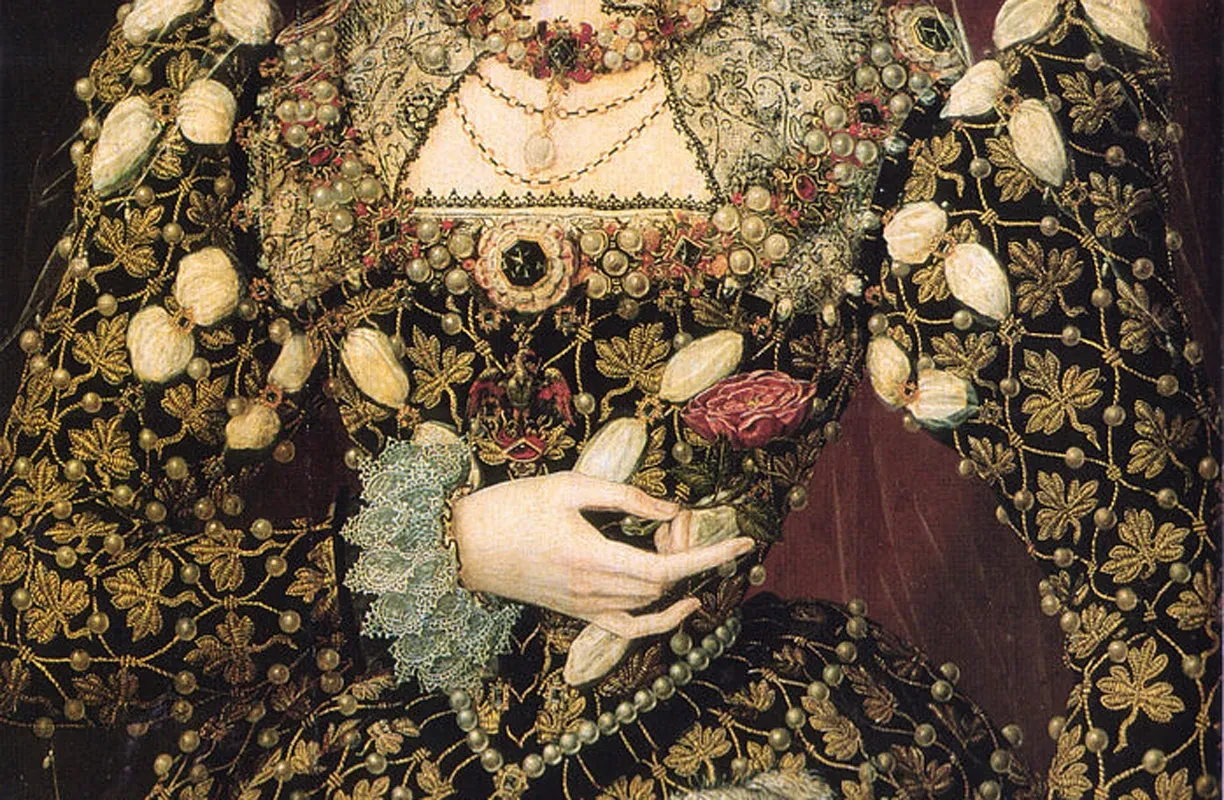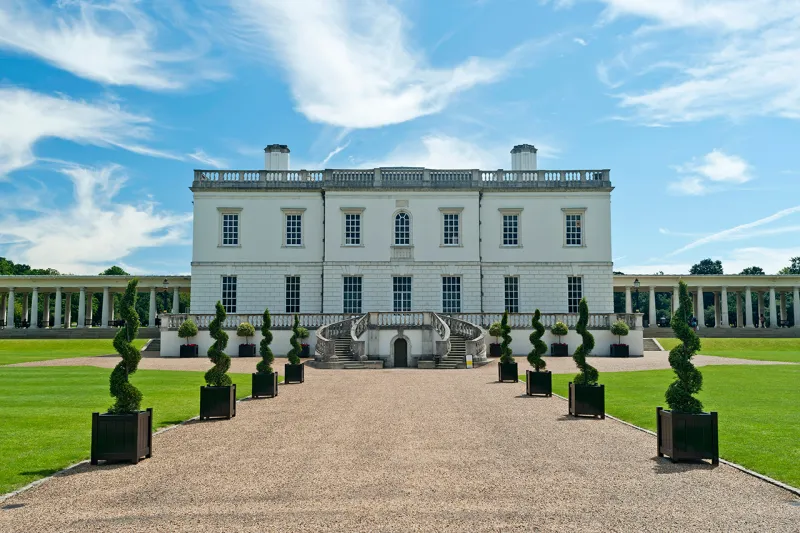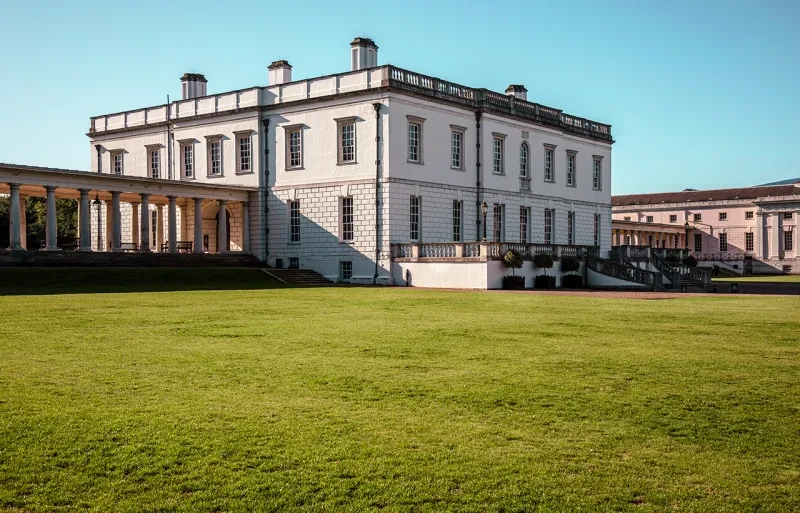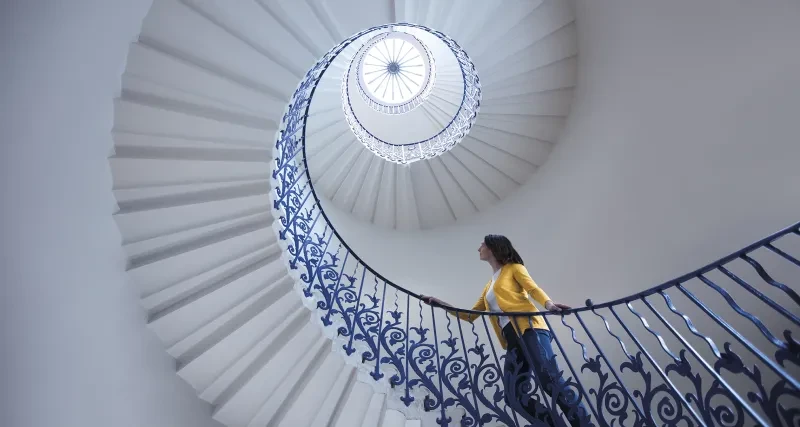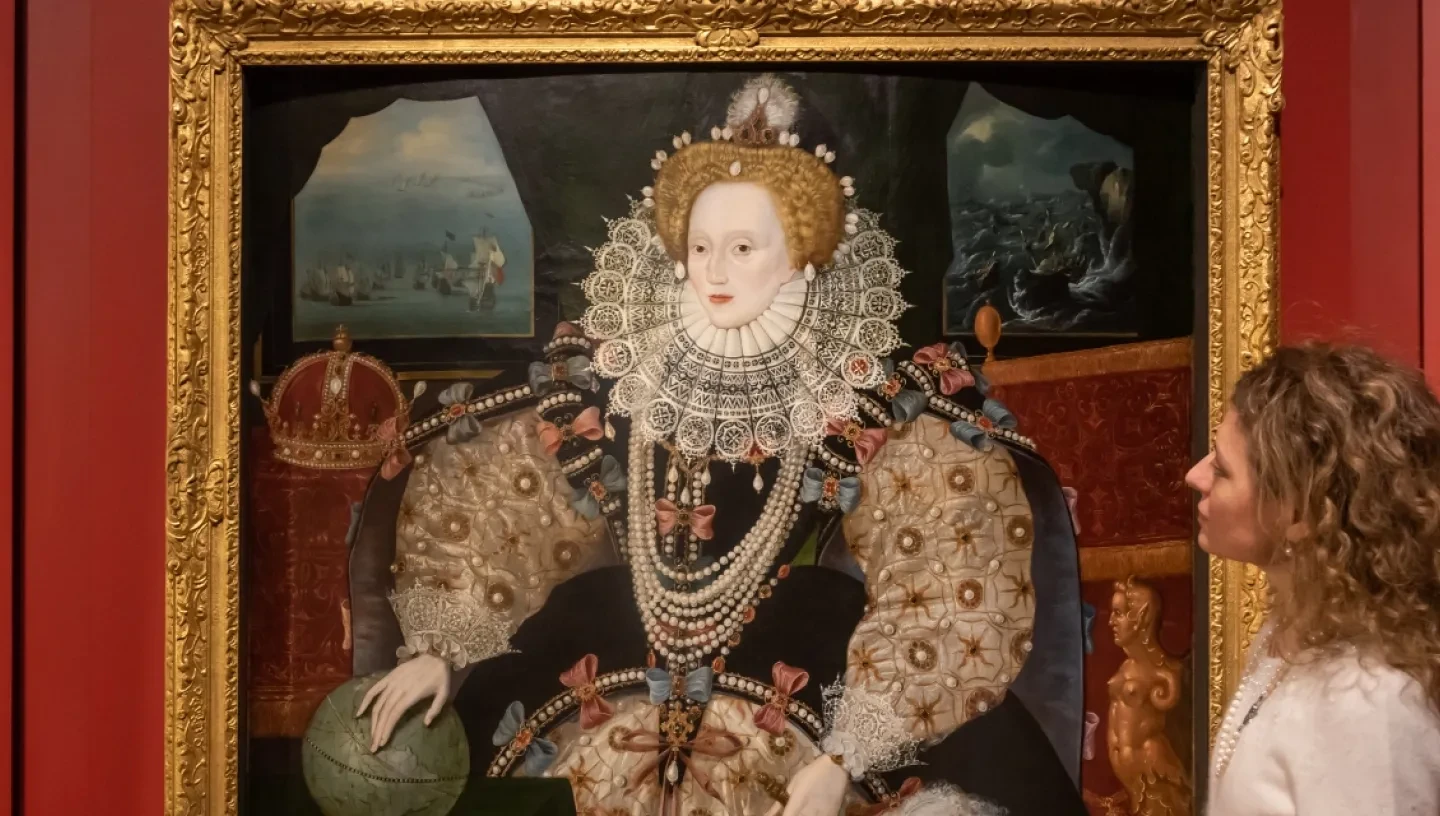
Find out more about the Tudor symbols used in portraits of Queen Elizabeth I and discover what they mean.
Watch more: Elizabeth I and power with Mary Beard
Symbolism in the Armada Portrait
Pearls
Pearls symbolise Elizabeth’s chastity and connect her to Cynthia, the Greek goddess of the Moon, who was a virgin and therefore seen as 'pure'.
Watch more: the Pearly Queen and the Queen's pearls
Mermaid
Mermaids tempt sailors and then ruin them, so the inclusion of a mermaid here could show Elizabeth’s might against the Spanish seamen.
Globe
The Globe represents England’s striving for imperial power in the Americas. In the painting, Elizabeth is pointing to Virginia, which was named after her.
Watch more: supermodel Eunice Olumide explores fashion and colonialism in the Armada Portrait
Hair, ruff, and embroidery
The circle of ruff extends from Elizabeth’s face like the Sun’s rays. She is shown as the centre and source of warmth, beauty, and goodness.
Colour scheme
Black and white was Elizabeth’s key colour scheme and symbolise chastity and constancy. Together the colours portray eternal virginity.
Sea scenes
In the Armada Portrait, Elizabeth faces toward the calm seas on her right and turns away from the stormy waters where the Spanish ships are floundering. She is positioned as a calm force for good, in contrast with the chaos of Catholic Europe.
Columns
In the Woburn Abbey and National Portrait Gallery version of the Armada Portrait you can see classical columns in the background. These are thought to allude to the pillars of Hercules, the westernmost point of the classical world.
The crown
The imperial crown depicted in the painting is often suggested to signify the pursuit of empire. However it also represents the claim made by the Tudors that they were descended from Brutus of Troy, who was by legend descended from Aeneas, the mythical founder and first king of Britain.
It acts as a reassertion of Elizabeth's right to rule.
Learn more: artist Daniel Lismore and Elizabethan inspiration
The Tudor rose in portraits of Elizabeth I
The red and white Tudor rose was created by combining the emblem of the House of Lancaster (the red rose) with that of the House of York (the white rose). These rival houses were united in 1486 by the marriage of the Lancastrian Henry VII and Elizabeth of York, which brought much-needed stability to the nation after years of civil war (the Wars of the Roses).
The Tudor rose was used in Queen Elizabeth I's portraits to refer to the Tudor dynasty and the unity it brought to the realm. The rose also had religious connotations, as the medieval symbol of the Virgin Mary. It was used to allude to Elizabeth, the Virgin Queen, as the secular successor to the Virgin Mary.
The pelican: a symbol of motherly love
The pelican was one of Elizabeth's favourite symbols. It was used to portray her motherly love to her subjects.
In times of food shortages, mother pelicans were believed to pluck their own breasts to feed their dying young with their blood and save their lives. In the process of feeding the mother would die. In the Middle Ages the pelican came to represent Jesus sacrificing himself on the cross for the good of mankind and the sacrament of communion, feeding the faithful with his body and blood.
The phoenix
A phoenix is a mythological bird which never dies but, after 500 years, is consumed by fire and born again, making it a symbol of the Resurrection, endurance and eternal life. Only one phoenix lives at a time, so it was also used to symbolize Elizabeth's uniqueness and longevity.
The ermine
The ermine, an animal of the weasel family, also featured in many portraits of Queen Elizabeth I. Prized for its tail of pure white fur with a black tip, according to legend the ermine would rather die than soil its pure white coat and it came to stand for purity. It also functioned as a status symbol, as wearing ermine was restricted to royalty and high nobility.
The sieve
A sieve is a symbol of virginity and purity reaching back to Ancient Roman times, where the Vestal Virgin, Tuccia, reputedly proved her purity by carrying water, unspilt, in a sieve. This symbol was used to glorify Elizabeth's virginity and associate England with the Roman Empire.
Moons and pearls in portraits of Elizabeth I
Moons and pearls were used to present Elizabeth as Cynthia (Artemis), the Greek goddess of the Moon, who was a virgin and therefore pure. Sir Walter Raleigh helped to promote the cult of Elizabeth as a moon goddess with a long poem he wrote during the late 1580s, The Ocean's Love to Cynthia, in which he compared Elizabeth to the Moon.
Elizabeth was also associated with Minerva (or Pallas Athena), the Classic virgin-goddess of war and defender of the state. Although prepared for war, Queen Elizabeth I preferred peace and came to stand for peacefulness and wisdom. She was also the patron of arts and crafts, especially wool, and of trade and industry, including shipbuilding.
Other symbols used in portraits of Queen Elizabeth I
An armillary sphere is a skeletal celestial globe used to represent and study the movements of the planets. It was used to represent wisdom and power and also as a symbol of the good relationship between Elizabeth and her courtiers.
Dogs were used to represent faithfulness, and the breed associated with the Tudors was the greyhound.
While gloves represented elegance and olive branches symbolised peace, crowns, orbs and sceptres all signified monarchy.
